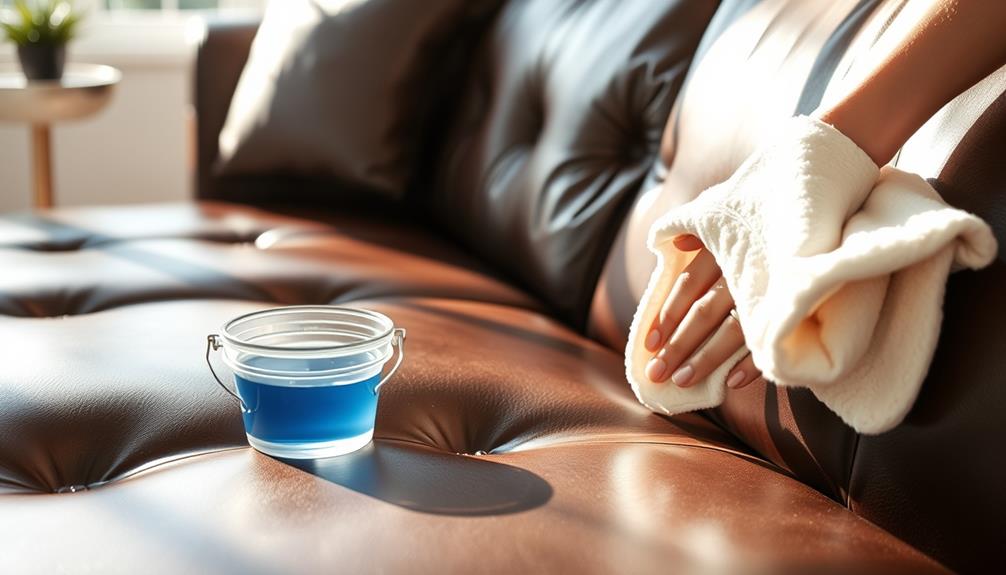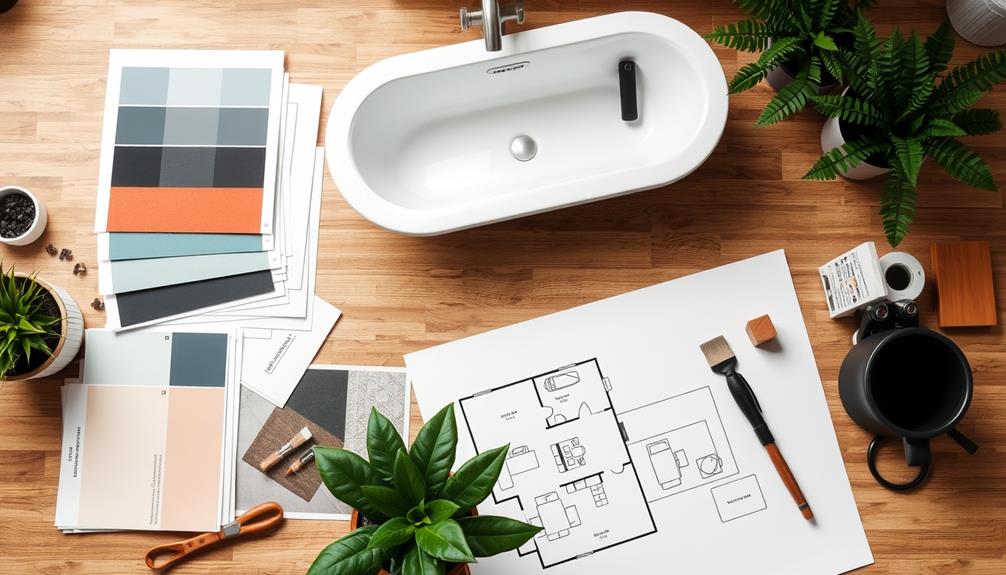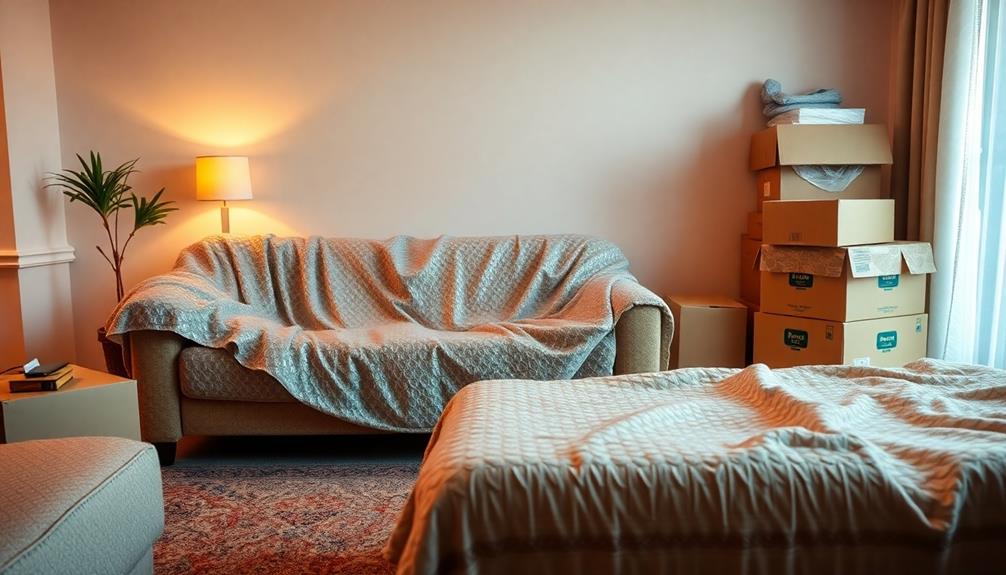In order to properly maintain your leather sofa, it is important to regularly dust it with a soft microfiber cloth or gently vacuum it. For a more thorough cleaning, create a mixture of mild soap and warm distilled water. Use a damp cloth to wipe the leather from top to bottom, then use another cloth to rinse off any soap residue. Dry the sofa with a cloth and allow it to air dry completely. If spills occur, blot them immediately and avoid rubbing. Don’t forget to condition your sofa every 6 to 12 months to keep it soft and supple. You can find additional tips and techniques for keeping your sofa in top condition. For stubborn stains or to maintain the color and shine of your leather sofa, consider using a specialized leather cleaner or conditioner. Be sure to test any new cleaning products on a small, inconspicuous area first to avoid damaging the leather. Following these leather sofa cleaning tips will help extend the life of your furniture and keep it looking great for years to come. Check out this helpful guide for more information: leather sofa cleaning tips
Key Takeaways
- Dust your leather sofa weekly with a soft microfiber cloth to prevent dirt buildup.
- Use a mild soap and warm distilled water solution for cleaning; wipe from top to bottom.
- Condition the leather every 6 to 12 months to maintain suppleness and prevent cracking.
- Address spills immediately by blotting with a clean cloth to avoid permanent stains.
- Test any cleaning products on an inconspicuous area before full application to prevent damage.
Cleaning Frequency and Preparation
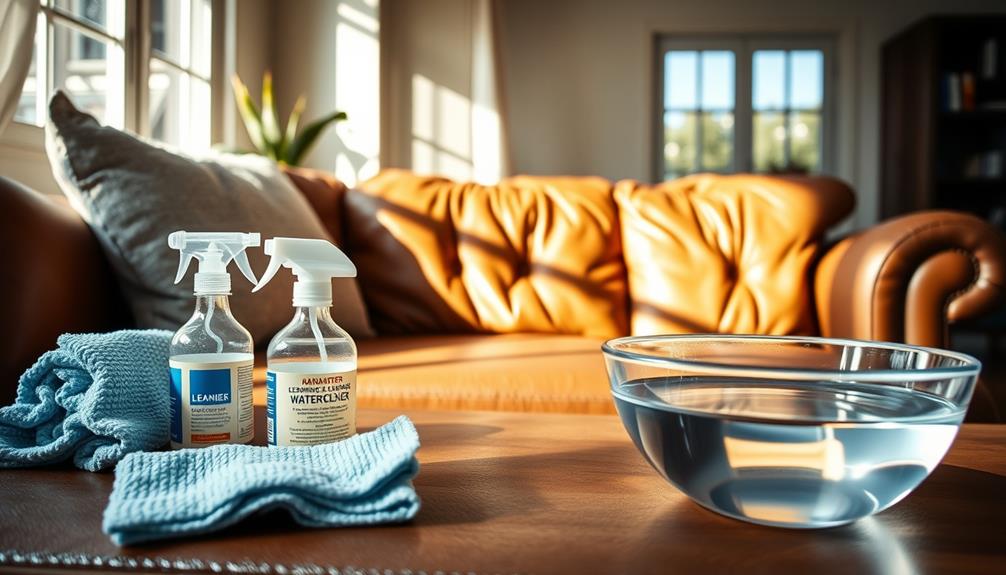
To keep your leather sofa looking its best, regular cleaning is vital. You should clean leather furniture weekly using a soft microfiber cloth or a vacuum equipped with a soft brush to effectively remove dust and debris. Incorporating essential oils for maintaining leather can also enhance the cleaning process, adding a pleasant aroma while conditioning the leather.
Don't wait to address any spills and stains; tackling them immediately can prevent lasting damage to the leather surface.
In addition to weekly maintenance, plan to deep clean and condition your leather sofa every 6 to 12 months, depending on usage and manufacturer recommendations. This helps maintain the leather's integrity and appearance.
Before you start cleaning, it's important to identify the type of leather—aniline, semi-aniline, or protected—as this will guide your choice of cleaning products and methods.
Make sure you're working in ideal cleaning conditions, too. Aim for a room temperature between 65-85°F, as extreme temperatures can negatively affect the leather.
Cleaning Process
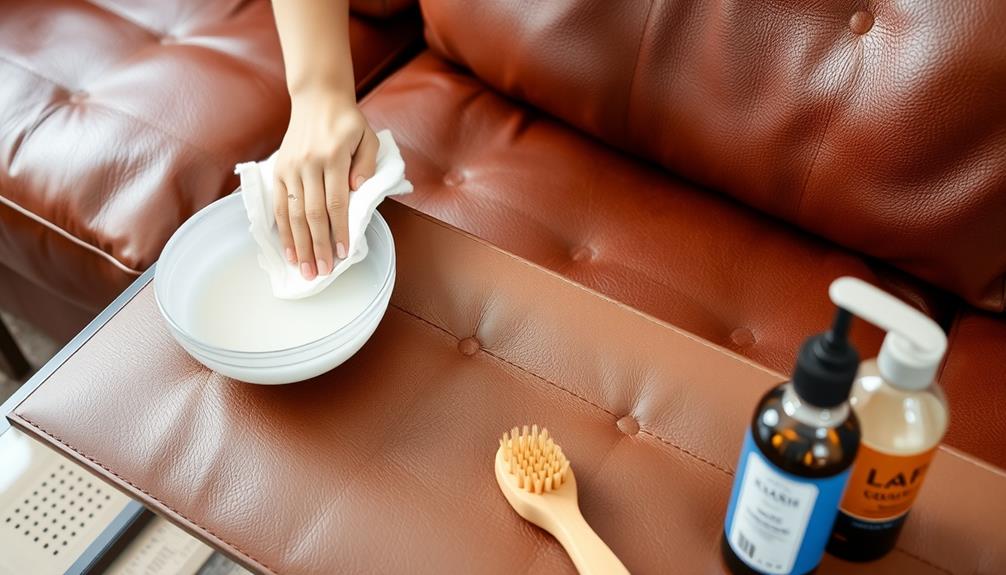
Cleaning your leather sofa requires a systematic approach to maintain its beauty and longevity. Start by dusting the leather surface with a soft microfiber cloth or vacuuming weekly to remove surface debris and prevent dirt buildup. Next, apply a leather-specific cleaner using a second clean microfiber cloth, working in small sections to ensure even coverage. After cleaning, it’s essential to condition the leather to keep it supple and prevent cracking. If you also have fabric upholstery, you might want to explore resources on how to clean sofa fabric at home to ensure all your furniture is well-maintained.
Regular maintenance, like cleaning your leather sofa, can help it last longer and look more appealing, similar to the benefits of fuel injection cleaning for vehicle performance.
Follow these steps for an effective cleaning process:
- Create a cleaning solution by mixing a few drops of mild, natural soap with warm distilled water.
- Dampen a soft microfiber cloth with this solution, wringing out excess moisture.
- Carefully wipe the leather surface, starting from the top and moving downward to avoid streaks.
- After cleaning, rinse the cloth in clean water, wring it out, and wipe the leather again to remove soap residue.
Once you've finished cleaning, buff the leather with a dry microfiber cloth to achieve a shine.
Remember to allow your leather sofa to air dry completely before using it again. Keep it away from direct sunlight to prevent fading and cracking.
Conditioning Leather
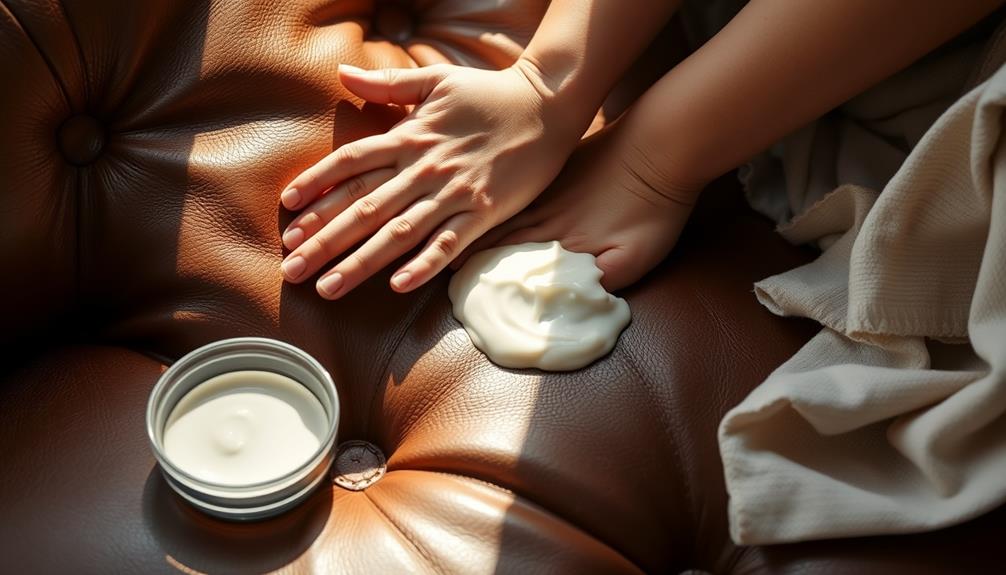
How often should you condition your leather sofa? To maintain suppleness and prevent cracking, it's best to condition every 6 to 12 months. Regular maintenance is key, especially if you have pets or live in a dusty environment where allergens can accumulate.
Start by selecting a high-quality leather conditioner that's suitable for your specific type of leather. Before diving in, it's vital to test the conditioner on an inconspicuous area to verify it won't discolor or damage your sofa.
Once you're ready, grab a clean microfiber cloth. Apply the conditioner sparingly, working in small sections to guarantee even coverage. This method helps you condition leather effectively without over-saturating it.
After applying the conditioner, allow it to absorb for at least 20 minutes. This waiting period is essential for the leather to soak up the nutrients and maintain its suppleness.
Once the time's up, take another clean microfiber cloth to buff the surface. This step not only restores shine but also removes any excess product, leaving your leather sofa looking and feeling rejuvenated.
Stain Removal Techniques
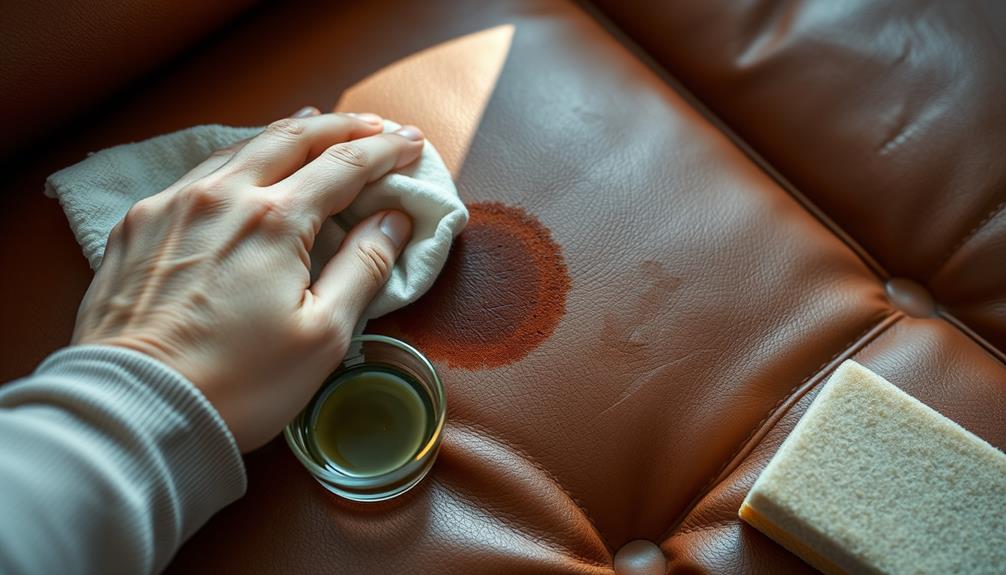
When a stain hits your leather sofa, acting quickly is key. Blotting the area immediately can save you from bigger problems down the line.
Additionally, maintaining a clean environment with the help of air quality monitoring can prevent allergens and dust from settling on your furniture.
Plus, knowing how to tackle specific stains will help keep your sofa looking its best.
Immediate Stain Response
Stains on a leather sofa can be nerve-wracking, but quick action can make all the difference. The key is to respond immediately to prevent the stains from setting in. Here are some effective techniques to tackle those pesky stains:
– Blot the stain with a clean, dry cloth to absorb excess liquid without rubbing, which can spread the stain. It's crucial to choose the right materials for cleaning, as harsh chemicals can harm the leather's finish.
For more insights on safe cleaning methods, refer to safe snacks for hamsters.
- For water stains, dampen a cloth and gently wipe the affected area. Allow it to dry naturally and avoid direct sunlight to prevent further damage.
- Use a mixture of mild soap and water to address greasy stains. Apply this mixture with a soft cloth, dabbing gently to avoid soaking the leather.
- For ink stains, apply isopropyl alcohol to a cotton swab, testing it first on an inconspicuous area to avoid discoloration. Carefully blot the stain with the swab.
Specific Stain Solutions
Dealing with specific stains on your leather sofa requires a tailored approach to guarantee effective removal without causing damage. For dark stains, mix lemon juice and cream of tartar into a paste, apply it for 10 minutes, and wipe off with a damp soft cloth.
Additionally, regular maintenance can extend the life of your leather sofa, similar to how appliance upkeep prevents unexpected repair costs for home appliances. Water stains can be treated by re-dampening the area and letting it dry naturally—just avoid direct sunlight.
To remove oil stains, sprinkle baking soda over the affected area and let it absorb overnight before vacuuming it off. For ink marks, gently blot the stain with rubbing alcohol using a cotton swab, then dry the area with a blow dryer if needed.
If you encounter mold, mix equal parts rubbing alcohol and water, and wipe the affected areas to clean and disinfect your leather surface.
Always remember to condition a leather sofa after cleaning to maintain its suppleness and shine. Using a quality leather cleaner can also help in overall maintenance. Whether it's vinegar and water or a specialized cleaner, these techniques will help you effectively remove stains and keep your sofa looking its best.
Maintenance Tips
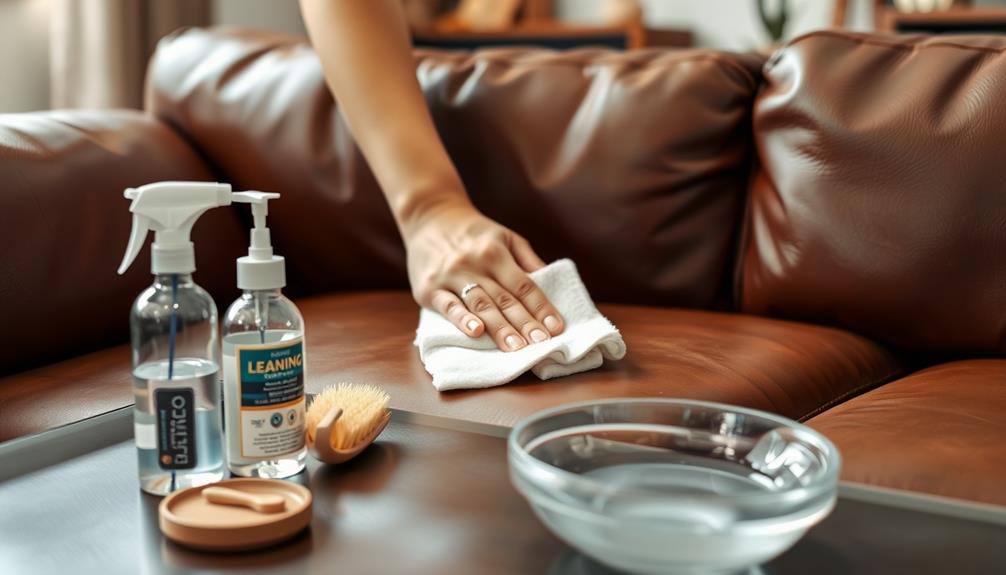
To keep your leather sofa looking its best, establish a regular dusting routine and vacuum it weekly with a soft cloth or upholstery brush.
Additionally, consider creating a mood board to inspire your overall living space design while maintaining your sofa.
If you spill something, don't wait—blot it up immediately to prevent stains from setting in.
Regular Dusting Routine
Maintaining the beauty of your leather sofa starts with a regular dusting routine. By dusting weekly, you can prevent dirt buildup and keep your sofa looking its best. Use a soft, dry microfiber cloth or an electrostatic duster to effectively remove dust and debris without causing damage.
Additionally, vacuum your sofa with a soft brush attachment to reach crevices that might collect debris. It's also beneficial to contemplate the importance of selecting the right cold medication when addressing seasonal allergies that may contribute to dust and dirt accumulation on your furniture.
Here are a few key tips to keep in mind:
- Dust your sofa weekly to prevent dirt buildup.
- Use a microfiber cloth for gentle dusting.
- Vacuum with a soft brush attachment for thorough cleaning.
- Follow up with a leather conditioner every 6-12 months.
A consistent dusting routine helps preserve the natural oils of the leather, reducing the risk of drying and cracking over time.
Confirm your cleaning area is at an ideal temperature of 65-85°F to facilitate effective dusting and minimize moisture-related issues.
Immediate Spill Response
Even with a regular dusting routine, spills can happen unexpectedly and require immediate attention. When a spill occurs, grab a clean microfiber cloth and blot the area to absorb as much liquid as possible. Avoid rubbing, as this can spread the stain further.
For water-based spills, gently dampen the cloth and wipe the affected area, letting it air dry naturally—steer clear of direct sunlight. It's also wise to maintain a budget for home maintenance, as unexpected spills may arise and can be costly budgeting for maintenance.
If you're dealing with greasy substances, sprinkle cornstarch or baking soda on the stain to absorb the oil. Allow it to sit for several hours before vacuuming it away.
Always remember to test any cleaning solution, including mild soap and water, on an inconspicuous area of the leather before applying it to the stain.
To keep your leather couch looking great, you should regularly inspect it for any signs of spills or stains. Prompt attention can prevent permanent damage, ensuring your sofa remains in excellent condition.
Conditioning Frequency Importance
Regular conditioning is essential for keeping your leather sofa looking and feeling its best. To maintain its suppleness and prevent cracking due to dryness, you should condition your sofa every 6 to 12 months. High-quality leather conditioners restore moisture and protect against spills, enhancing your sofa's longevity.
Additionally, just as the health benefits of juices can improve overall well-being, maintaining your leather also guarantees it remains a beautiful part of your home for years to come.
Here are some tips to help you with the conditioning process:
- Use high-quality leather conditioners for superior results.
- Apply the conditioner with a clean microfiber cloth in circular motions for even coverage.
- Allow the conditioner to absorb for at least 20 minutes before buffing with a separate cloth.
- Regularly condition to help prevent stains from setting in.
Materials to Avoid
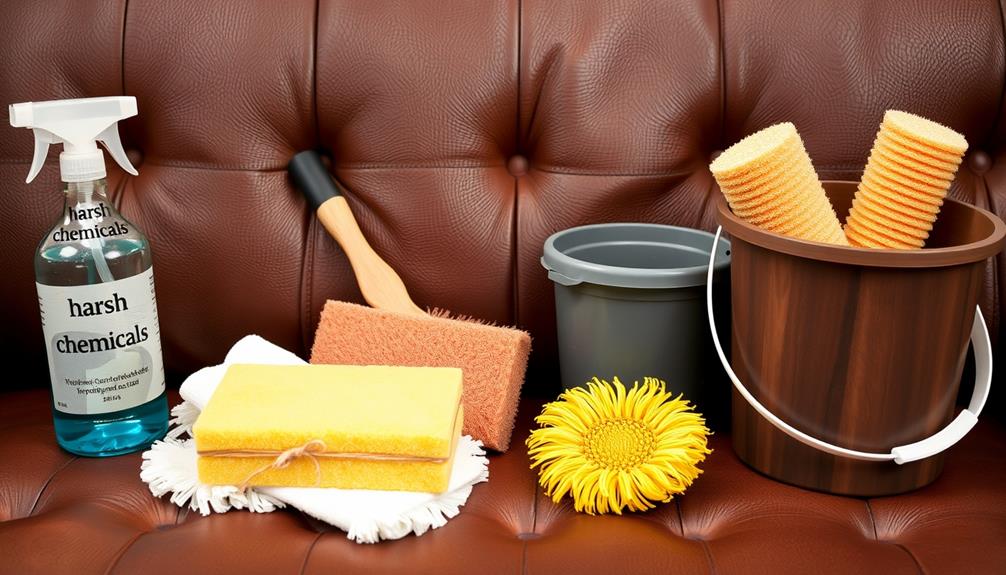
When cleaning your leather sofa, it's crucial to steer clear of certain materials that can cause irreversible damage. Using harsh chemicals like bleach and ammonia can strip away the natural oils in the leather, leading to dryness and cracking. You should also avoid two-in-one cleaning products, as they often fail to effectively clean or condition the leather.
Additionally, wood cleaners and glass cleaners contain solvents that can damage the material. Never steam clean your leather furniture; the heat can compromise its structure and finish. Finally, steer clear of direct sunlight during the cleaning process, as it can cause fading and further drying of the leather.
Here's a quick reference table of materials to avoid:
| Material | Reason for Avoidance | Potential Damage |
|---|---|---|
| Harsh Chemicals | Strips natural oils | Dryness and cracking |
| Two-in-One Products | Ineffective cleaning/conditioning | Residue buildup |
| Wood Cleaners | Contains damaging solvents | Can damage the material |
| Glass Cleaners | Contains solvents that harm leather | Deterioration |
| Steam Clean | Heat damages structure and finish | Structural damage |
| Direct Sunlight | Causes fading and drying of leather | Color loss and dryness |
Types of Leather
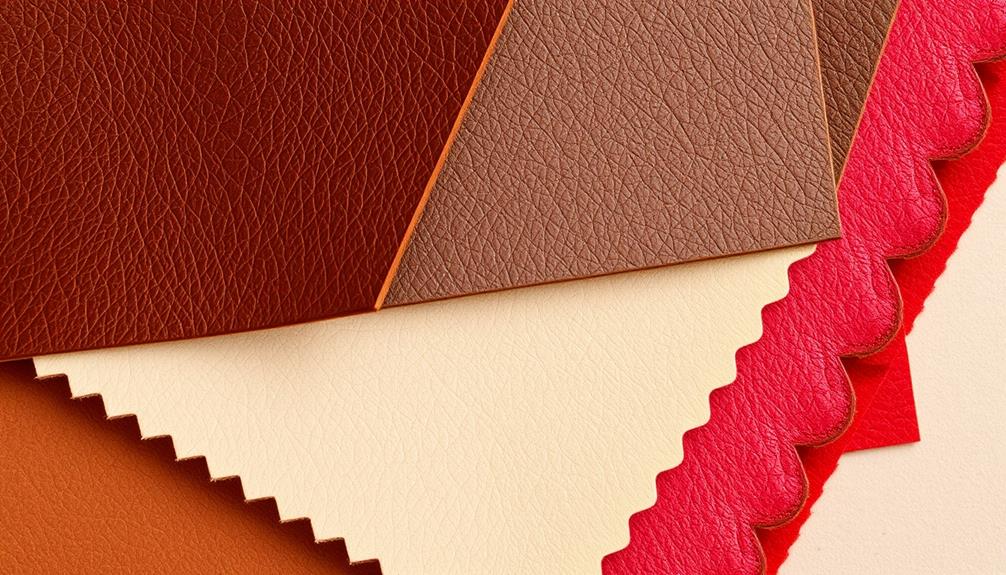
Understanding the different types of leather is essential for maintaining your sofa's quality and longevity. Each type has unique characteristics that affect its durability and care requirements, as well as how they may relate to your personal style and preferences, including aspects like astrological compatibility.
Here's a quick overview:
- Full-grain leather: The most durable option, it retains its natural grain and develops a rich patina over time, making it ideal for high-quality leather sofas.
- Top-grain leather: Slightly sanded to remove imperfections, this type offers a sleek appearance while still being durable, striking a balance between looks and resilience.
- Corrected-grain leather: Treated to hide blemishes and often embossed, it's less expensive but less breathable than higher-quality leathers, making it a more budget-friendly option.
- Suede: With its soft, napped finish from the underside of the leather, suede feels luxurious but is less durable and more prone to stains, requiring careful leather cleaning.
- Bonded leather: Made from leftover scraps, bonded leather is lower quality, often used in budget furniture, and typically doesn't offer the same longevity as full or top-grain leather.
Knowing these types helps you choose the right cleaning methods to maintain your sofa's beauty.
Recommended Cleaning Supplies
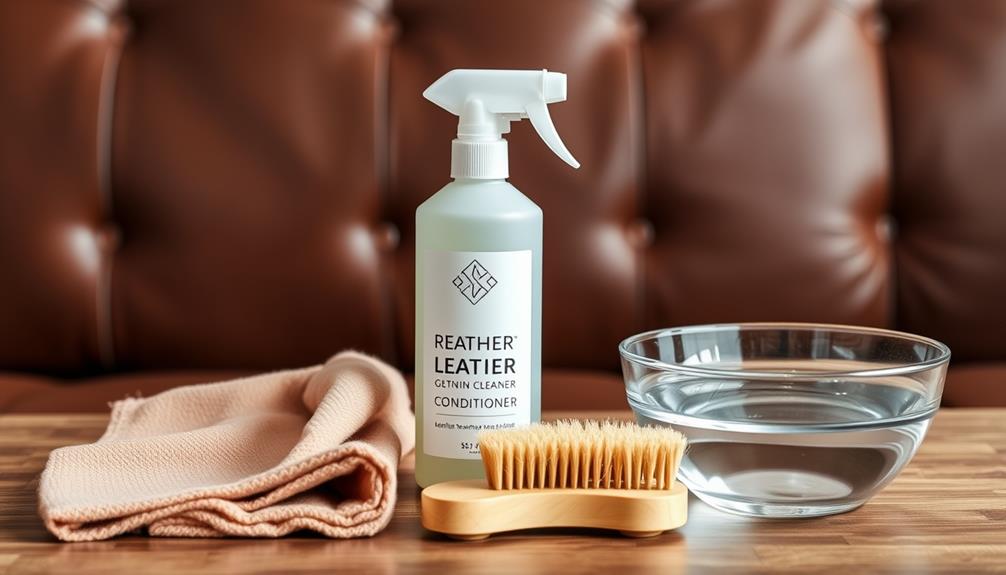
To keep your leather sofa looking its best, having the right cleaning supplies on hand is essential. Start with a soft microfiber cloth; it's perfect for dusting and cleaning leather surfaces without scratching them.
You'll also need a pH-balanced leather cleaner specifically formulated for leather to avoid damaging the material. When mixing your cleaning solutions, use distilled water to prevent any mineral deposits that could harm your sofa.
For textured leather surfaces, a soft-bristle brush can come in handy for gently scrubbing away dirt and dark stains without causing abrasion.
After cleaning, don't forget about leather conditioner. Choose a high-quality product suited to the specific type of leather you have; this will help maintain its suppleness and prevent drying.
Have a clean cloth nearby for any excess moisture after you've finished cleaning.
With these recommended supplies—microfiber cloth, pH-balanced leather cleaner, distilled water, soft-bristle brush, leather conditioner, and a clean cloth—you'll be well-equipped to keep your leather sofa in top condition for years to come.
Frequently Asked Questions
What Is the Best Way to Clean a Leather Sofa?
To keep your leather sofa looking great, dust it weekly, use a mild soap solution for cleaning, address stains immediately, and condition it every six to twelve months. Always test cleaners beforehand.
What Household Items Can You Use to Clean a Leather Couch?
Did you know that 85% of leather care can be achieved with household items? Use equal parts vinegar and water, mild soaps, or olive oil and vinegar to effectively clean your leather couch and maintain its shine.
Can You Use Dawn and Water to Clean Leather Couch?
Yes, you can use Dawn and water to clean leather. Just mix a few drops of Dawn in distilled water, test it on a hidden spot, and gently wipe with a soft microfiber cloth.
How to Make a Leather Couch Look New?
Did you know that properly maintained leather can last over 15 years? To make your leather couch look new, regularly dust it, clean with mild soap, condition every six months, and use a protector spray.
Conclusion
In summary, keeping your leather sofa in tip-top shape isn't a challenging task; it's like nurturing a friendship—regular care goes a long way. By cleaning, conditioning, and maintaining it properly, you'll extend its life and beauty for years to come. Remember to treat stains swiftly and avoid harsh materials. With these tips in your toolkit, your leather sofa will remain a cozy centerpiece in your home, inviting you to sink in and relax time and again.
